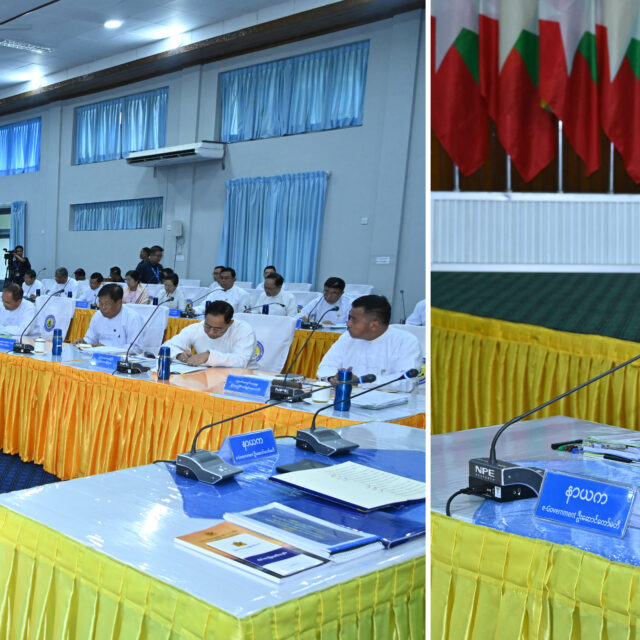The nationwide livestock census started yesterday in Ayemyinthaya village, Pobbathiri Township of Nay Pyi Taw Union Territory, with Union Agriculture, Livestock and Irrigation Minister U Min Naung, Chairman of the Nay Pyi Taw Council U Than Tun Oo and officials attending the event.
Starting 1 November, the livestock census is being conducted in village tracts and wards of 214 townships in 13 states and regions, and at the same time, the census is being taken in 277 villages of Nay Pyi Taw Council’s eight townships, with Deputy Ministers Dr Aung Gyi, Dr Tin Htut and U Bo Bo Kyaw making field inspections in Ottarathiri Township, Pyinmana Township and Tatkon Township respectively.
After inspecting the livestock census and meeting with livestock operators, the Nay Pyi Taw Council Chairman said that the government is focusing on the development of agriculture-based production activities and the income improvement of each family in addition to developing road and bridge infrastructure. He also urged the farmers to make an all-round effort for the development of high-added products and tourism businesses in the area while setting a Nay Pyi Taw council area’s model of development that other states and regions can follow.
Similarly, the Union Minister explained that a nationwide livestock census is being carried out to be able to effectively manage domestic food security, export promotion as well as livestock disease prevention and treatment activities, before urging people to contribute a correct number of animals. The Union Minister also said 20 billion kyats have been provided from the State Economic Promotion Fund for speeding up the raising of pigs and poultry for meat in 11 states and regions, and he encouraged people to cooperate in boosting production of the country.
In Myanmar, the livestock census was conducted annually by the Department of Livestock Breeding and Veterinary under the Ministry of Agriculture, Livestock and Irrigation from 1979-1980 to 1993-1994, but from 1994 to 2017, the livestock census could not be collected on the ground, so it was only possible to record the estimated data by employing statistical methods. In 2018, the livestock census was carried out on a national scale to ensure the accuracy of the basic statistics, which are important for the development of the livestock sector and the prevention and control of animal diseases. To find out the changes in the animal population, an interim census was conducted every year, and a nationwide livestock census was collected every five years. This year’s effort is the second nationwide livestock census. — MNA/TH
Nationwide livestock census to be conducted in Nov/Dec
- November 02, 2023
- 385














